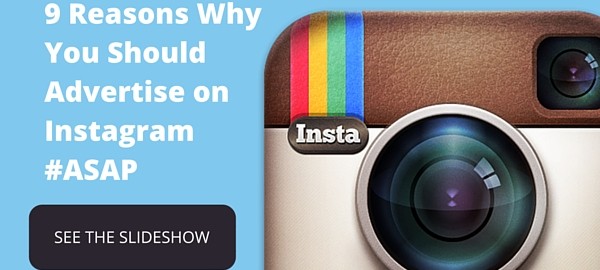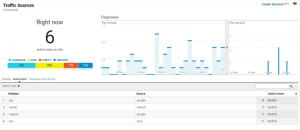When 98 of Facebook’s top 100 advertisers also market their products on Instagram, you can bet you need to have an air tight strategy to make sure you can compete. You can’t just re-use the stuff you’re putting out on Facebook; it’s an apples-to-oranges comparison.
At the same time, Facebook is placing more value on impression metrics in Instagram than on sales conversions as they find that right balance of content, but there are a number of things you can do to make it work for direct response.
Though Instagram is still a fairly new channel to add to your paid marketing mix, best practices for advertisers have already emerged.
But with everyone suggesting the same thing, how do you expect to stand out by fitting in?
Here are three best practices that may seem counterintuitive, but can definitely help campaign performance as you grow your spend on Instagram.
1. Make Your Ads Recognizable as Ads

(not a client)
Even when brands were first joining Instagram to participate organically, the conventional wisdom has always been that the images you post should have a very “Instagram” look and feel so as to provide a non-disruptive experience.
Problem is, when your ads look too much like typical Instagram posts, people may not realize they’re ads and you won’t get the clicks you need.
It’s a fine balance, because Instagram is all about the power of the image, and there are image quality standards your ads have to meet in order to be used. But while your creative should be uncompromising in quality, they should also be recognizable as ads that people will know they can click to learn more.
Our Facebook reps reference the “Thumbnail Test”. If you scroll up through your feed and your thumb covers your account name & avatar, you should be able to tell who the advertiser is based on the ad’s image alone. If you can’t, it isn’t a strong enough direct response ad.
This doesn’t mean you have to completely abandon your high-fashion, slightly-saturated, perfectly composed photography. But, you might add your logo to the image in a tasteful way, or utilize Instagram’s carousel ad unit which is less common in a feed of single images.
And I feel like I shouldn’t have to say this, but for the love of all things advertising, use the CTA button.
2. Bid on Link Clicks to Aid Your Long Term Strategy
When you bid on link clicks with Instagram advertising, it’s like with Facebook advertising: you pay each time someone clicks on the part of your ad that sends them to your website or your app (as opposed to engagement clicks like likes or shares). The Facebook ad platform optimizes ads to show them to people most likely to click on your ad in this manner.
Intuitively, this isn’t what you think you should be doing if your goal is conversion. On Facebook, that bidding is optimized for a purchase or checkout. But on Instagram, you should try bidding on link clicks.
Currently, there aren’t as many people purchasing via Instagram, and Facebook doesn’t yet have the data necessary to identify them in large audiences like they do on Facebook.
By bidding on link clicks, you’re playing the long game. You’re reaching people further up the funnel and getting clicks, but your real power is in retargeting these users later.
3. Skip Hashtags in Direct Response Ads
Brands use hashtags in Instagram posts because it’s a go-to discovery and branding practice. But hashtags can be overdone, and when it comes to using ads for direct response, they’re mostly a distraction that our Facebook reps themselves do not recommend including.
Clicking a hashtag from an ad sends you to the search results for that hashtags. And while your ad may still appear in those search results, in our world, you want the off-site click that leads to a conversion; the engagement tactics of listing one, two, or fifty hashtags won’t land people where you want them. (Sidenote: Targeting by hashtags could be a cool feature on Instagram, but it doesn’t exist at the moment.)
If you feel compelled to include a hashtag to augment a larger branding campaign you have going on in tandem, try including it in the imagery.
—–
Brands are flocking to Instagram largely because they it carries the clout of being powered by the Facebook advertising platform.
But it’s important for brands to understand that Instagram ads can’t just be reheated Facebook ads, and that sometimes “best practices” go against the prevailing wisdom.
With Instagram advertising, especially as new as it is, you have opportunities to zig when others zag, and in doing so, help define what makes an Instagram ad effective.
Digital & Social Articles on Business 2 Community
(41)







